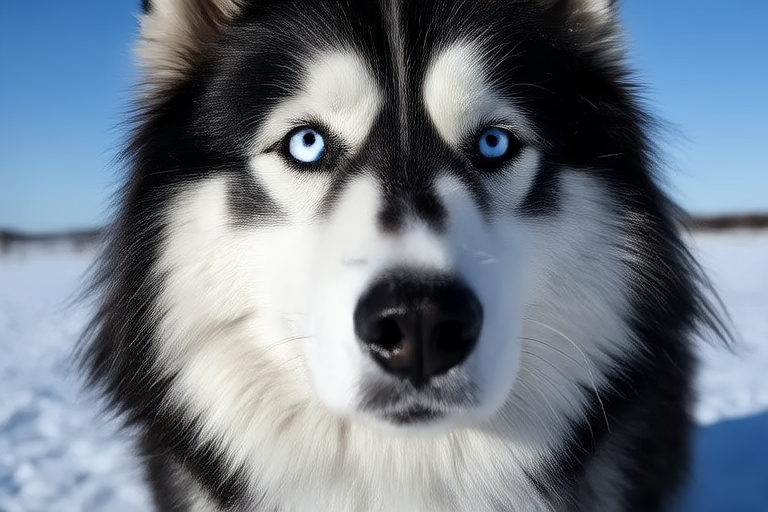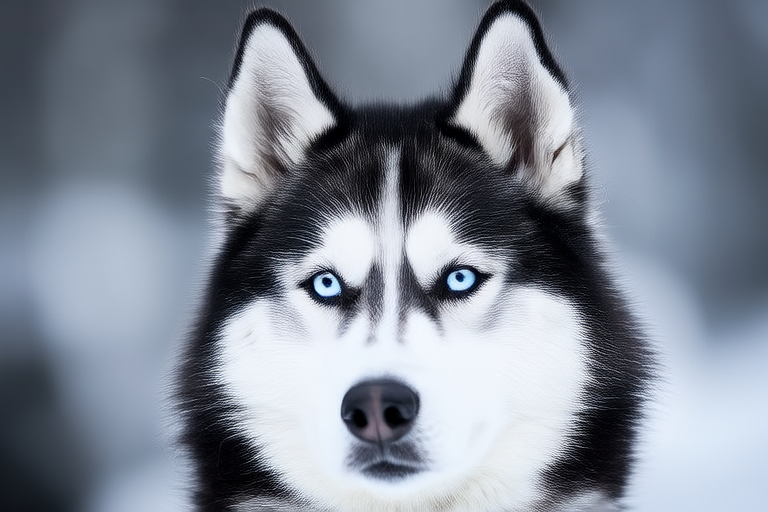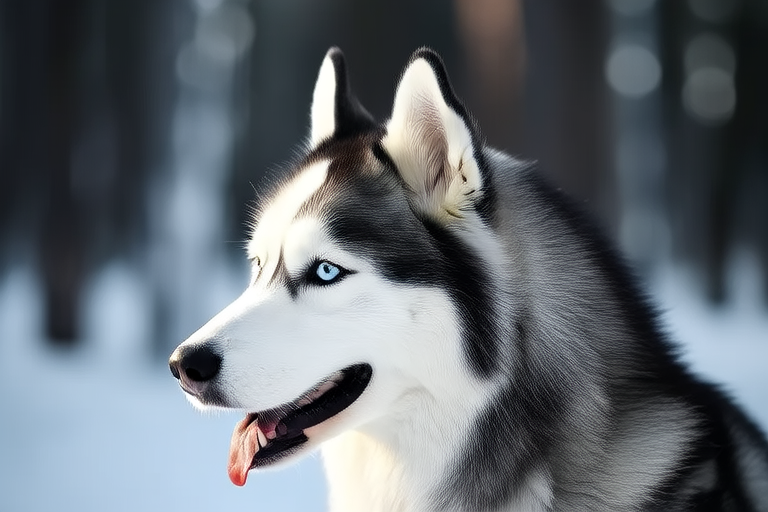Genetic Factors Contributing to Siberian Huskies’ Blue Eyes
The Siberian Husky is one of the most iconic dog breeds known for its striking blue eyes. This article explores the genetic factors contributing to this unique trait, its prevalence within the breed, the historical context of these dogs and how it relates to their eye color, common misconceptions about the link between eye color and temperament, and scientific studies or theories explaining the genetics behind this iconic trait. Additionally, we provide practical tips for owners of Siberian Huskies with blue eyes regarding healthcare and maintenance specific to their ocular characteristics.
Genetic Basis of Blue Eyes in Siberian Huskies
The genetic basis for blue eyes in Siberian Huskies involves multiple genes interacting together. One gene that plays a significant role is ASIP, which influences coat color and pigmentation. Another gene associated with blue eyes is ALX4. However, the exact combination of genes responsible for this characteristic remains unclear. Research suggests that certain genetic variations may predispose a Siberian Husky to have blue eyes, but these variations do not always result in blue eyes.
Blue eyes in Siberian Huskies are caused by a lack of pigmentation in the iris, similar to albinism. The absence of melanin leads to light-colored irises, which reflect more light and appear blue. This condition is known as heterochromia iridum, where one or both eyes lack pigment. It’s important to note that not all Siberian Huskies will have blue eyes; some may have brown, amber, or even parti-colored eyes.
Prevalence of Blue Eyes in Siberian Huskies
While blue eyes are common in Siberian Huskies, they are not exclusive to this breed. Other breeds, such as Australian Shepherds and Border Collies, can also exhibit blue eyes due to similar genetic factors. In Siberian Huskies, approximately 40% of individuals have at least one blue eye, making it a distinctive feature of the breed. However, the prevalence of blue eyes can vary depending on breeding practices and genetic diversity within different populations.
Historical Context and Eye Color
Siberian Huskies were originally bred by the Chukchi people of northeastern Asia for sledding and herding. These dogs were valued for their endurance, strength, and ability to work in harsh conditions. The Chukchi people selectively bred dogs with certain traits, including eye color, to enhance their working capabilities. Blue eyes may have been favored because they provided better visibility in snowy environments, allowing the dogs to see clearly during blizzards.
Historically, blue-eyed Siberian Huskies were considered superior workers and were highly prized by their owners. Today, blue eyes remain an important part of the breed’s identity and are often sought after by potential owners. However, it’s essential to remember that eye color alone does not determine a dog’s suitability as a working companion or pet.
Common Misconceptions About Eye Color and Temperament
One common misconception is that blue-eyed Siberian Huskies are more aggressive or difficult to train than those with other eye colors. There is no scientific evidence supporting this claim. A dog’s temperament is influenced by various factors, including genetics, environment, socialization, and training. While some Siberian Huskies may be more independent or energetic than others, there is no correlation between eye color and temperament.
Another misconception is that blue-eyed Siberian Huskies are more prone to health issues. While it’s true that certain genetic factors can increase the risk of specific conditions, such as progressive retinal atrophy (PRA), these risks apply to all Siberian Huskies, regardless of eye color. Regular veterinary check-ups and appropriate care can help ensure the overall health and well-being of your Siberian Husky.
Scientific Studies and Theories Explaining Blue Eyes
Several scientific studies have investigated the genetic basis of blue eyes in Siberian Huskies. One study published in the journal PLoS Genetics identified several genetic loci associated with blue eyes in the breed. Researchers found that the ASIP gene, which controls coat color and pigmentation, also plays a role in determining eye color. They concluded that blue eyes in Siberian Huskies are likely the result of incomplete dominance, meaning that two copies of the recessive allele are needed for blue eyes to develop.
Another theory suggests that blue eyes in Siberian Huskies may be linked to a mutation in the ALX4 gene, which regulates neural crest cell migration during embryonic development. Neural crest cells give rise to many tissues and structures in the body, including the iris. Mutations in this gene could lead to abnormal neural crest cell migration, resulting in reduced pigmentation in the iris and blue eyes.
Tips for Owners of Siberian Huskies with Blue Eyes
If you own a Siberian Husky with blue eyes, here are some practical tips to help maintain their ocular health:
- Regular Veterinary Check-Ups: Schedule routine visits with your veterinarian to monitor your dog’s eye health. Early detection of any potential issues can prevent complications and improve outcomes.
- Proper Nutrition: Provide a balanced diet rich in antioxidants, vitamins, and minerals that support ocular health. Consult with your veterinarian to determine the best nutritional plan for your dog.
- Protective Eyewear: Consider using protective eyewear, such as goggles or sunglasses, when your dog is exposed to bright sunlight or wind. This can help prevent irritation and damage to sensitive blue eyes.
- Avoid Irritants: Keep your dog away from irritants like smoke, dust, and chemicals that could cause discomfort or harm to their eyes. Regularly clean your home to minimize allergens and pollutants.
- Monitor for Signs of Distress: Be vigilant for signs of eye discomfort, such as excessive blinking, squinting, redness, or discharge. If you notice any unusual symptoms, consult your veterinarian immediately.
In conclusion, the blue eyes of Siberian Huskies are a fascinating genetic trait shaped by centuries of selective breeding and adaptation to challenging environments. Understanding the genetic factors behind this characteristic can help us appreciate the complexity of canine genetics and the importance of responsible breeding practices. By providing proper care and attention to our furry companions, we can ensure that they enjoy good ocular health throughout their lives.


